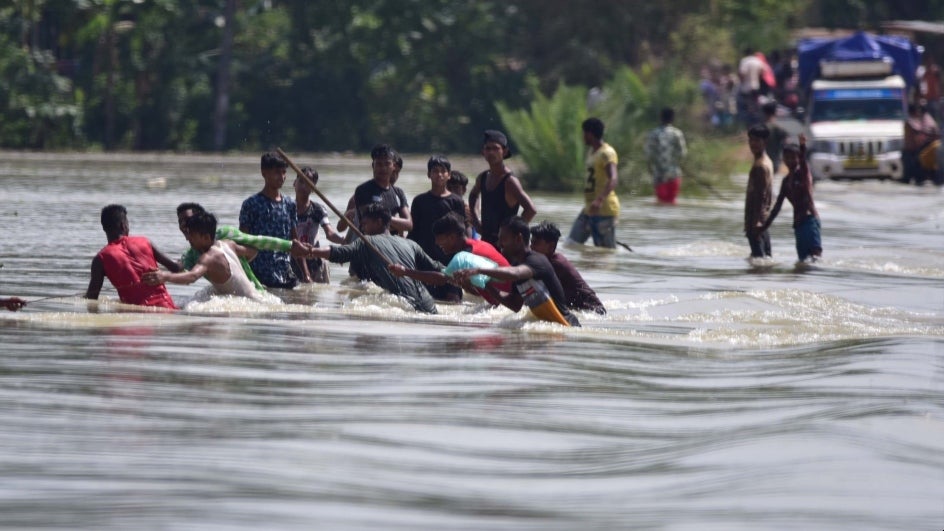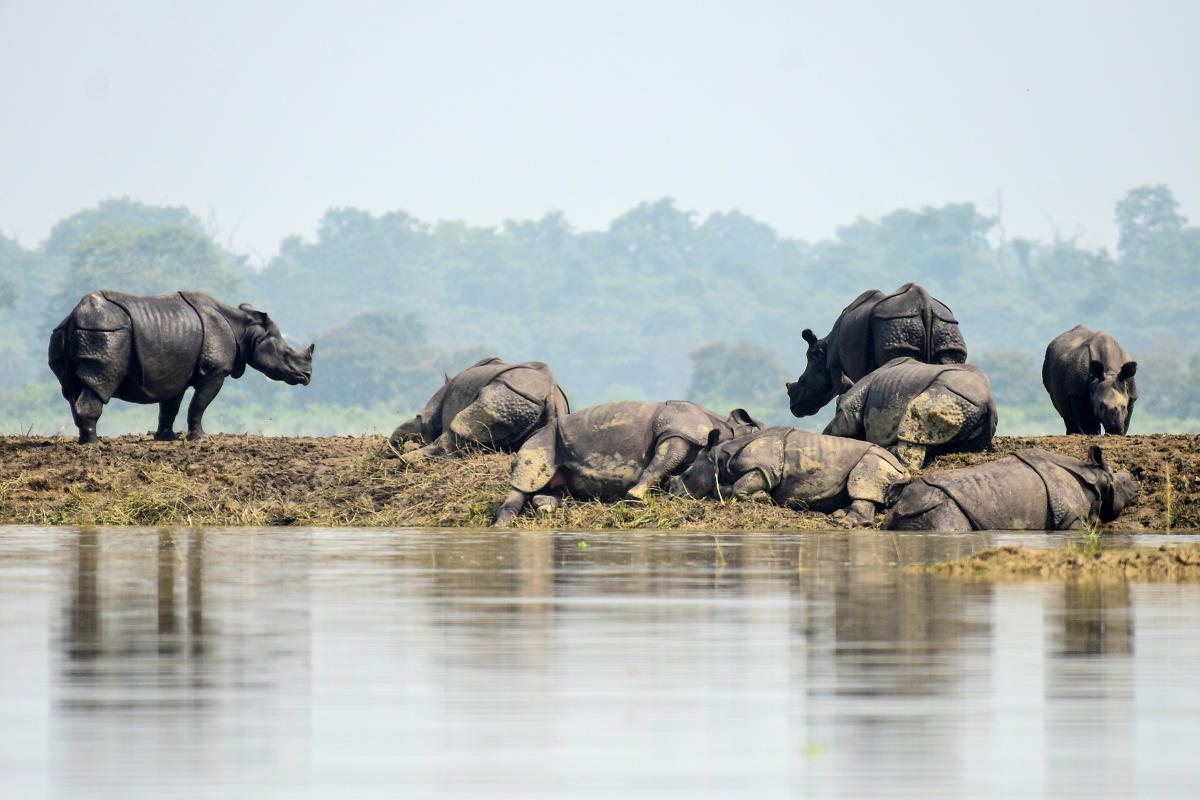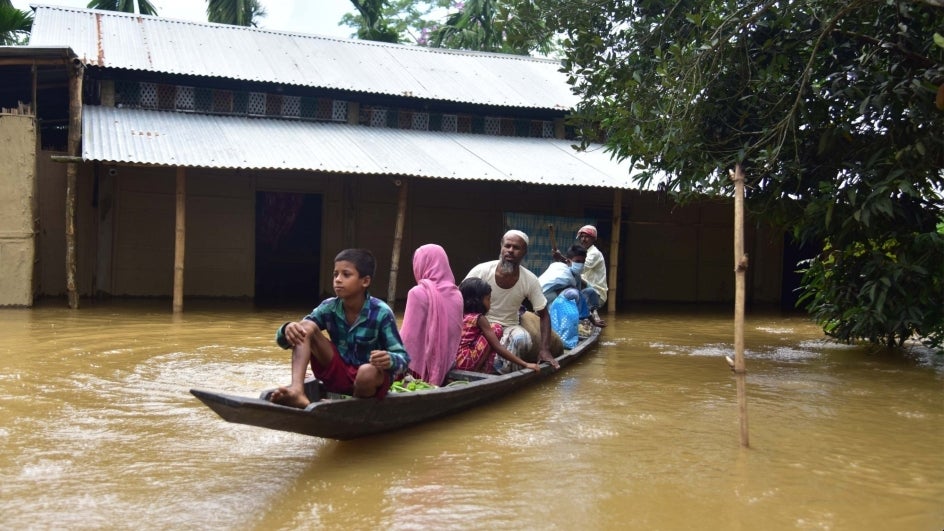OdishaPlus Bureau
Death toll in the Assam floods has now risen to 96 after three more persons lost their lives on Friday. Out of the 33 districts’, 28 lakh people of 26 districts have been seriously affected.

Major rivers flowing down from neighbouring Arunachal Pradesh and Meghalaya, including the Brahmaputra have crossed limits. Assam has recorded 19% excess rainfall so far since June 1, when the four-month-long monsoon season started. Since June 1 and till Friday, Assam so far recorded 926.9 mm rainfall against the normal 779.9 mm.
At least 125 wild animals have died in floods and 153 rescued as per reports by the Forest Department officials. The animals that have perished in the deluge include 12 rhinos, 93 hog deer, eight wild boars, five wild buffaloes, and three porcupines.

While the Brahmaputra has been flowing above the danger mark in a large number of places in five districts, as many as seven more rivers — Dhansiri, Jia Bharali, Kopili, Beki, Kushiyara, Sankosh, Dharamtul — are flowing above the danger mark in a large number of places in seven districts. The floods, triggered by heavy rains, have affected 2,543 villages and also inundated 122,573 hectares of crop area in 26 districts and damaged 30,605 houses partially and completely.
The district administrations have set up around 500 relief camps and distribution centres in 26 districts, where around 50,200 people have taken shelter. Of the 26 affected districts, 15 — Dhubri, Goalpara, Barpeta, Morigaon, South Sakmara, Dhemaji, Lakhimpur, Darrang, Nalbari, Kamrup (Metro), Kamrup (Rural), Nagaon, Golaghat, Majuli, Bongaigaon — are the worst-hit.

Around 14 lakh domesticated animals and over 8 lakh poultry birds were affected. Besides Kaziranga National Park, located on edge of the eastern Himalayan biodiversity hotspots of Golaghat and Nagaon districts, the Manas, R.G. Orang and Tinsukia national parks, the Pabitora and Tinsukia wildlife sanctuaries were also affected.
A total of 16 National Disaster Response Force teams and many teams of State Disaster Response Force, along with the local administration, are continuously working to rescue affected people and render relief services, including distribution of necessary material to the marooned villagers.




















